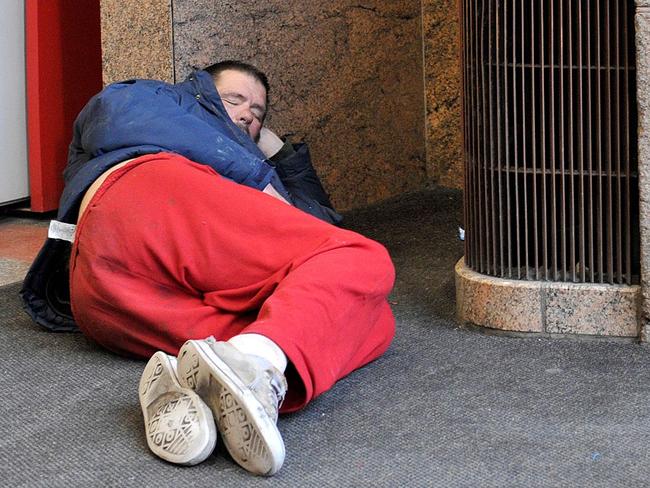Australian Bureau of Statistics Census data reveals shocking spike in homelessness
THE Australian Bureau of Statistics has failed to reflect the true nature of Australia’s growing homelessness crisis, after further analysis of the Census data.
National
Don't miss out on the headlines from National. Followed categories will be added to My News.
THE Australian Bureau of Statistics has failed to reflect the true nature of Australia’s growing homelessness crisis.
In its release of 2016 Census data yesterday, the ABS chose to highlight the 4.6 per cent increase in the “rate” of homelessness in Australia.
A more telling statistic, not included in its press release, would be the 14 per cent spike since 2011 in the number of Australians experiencing homelessness.
But the most important statistic was the raw data that showed just how many more people were experiencing homelessness than five years ago, Mission Australia’s chief executive James Toomey told News Corp.
According to the ABS data, about 14,000 more Australians are homeless compared to 2011, with the total number now a record 116,427 people.
Mr Toomey said homelessness services were “stretching” to meet the growing demand.
He also said the ABS data also revealed more about the crisis.
“Rough sleepers are the visible face of homelessness. The hidden homeless numbers have gone up as well,” he said.
In five years, the number of people living rough had grown from 6810 to 8200 nationally — a 20 per cent spike.

But the number living in severely crowded dwellings had spiked 23.5 per cent to 51,088 anf the number living in boarding houses had spiked 17 per cent to 17,503.
St Vincent De Paul chief executive John Falzone said the ABS figures were “no surprise” and appropriately captured the change in demand.
He said the rise in homelessness in Australia was “unconscionable”.
“There is deafening silence from the federal government on taking responsibility for this national tragedy,” he said.
“Our members see people literally sleeping on the streets.
“They visit people in homes ... and see very obviously an increase in the number of people living in inappropriate housing.”
He called for stable funding for homelessness and more resources for social housing.
Mr Toomey also said more social housing was required to tackle the problem.
An ABS spokeswoman said the 4.6 per cent increase in the rate of homelessness was selected because it accounted for population growth as well as the increase in actual numbers.
“We chose to put in the figure with the most context,” she said.

“It was the most comparable to 2011.”
The ABS also provided the following calculation as an explanation.
“There were 116,427 people enumerated in the Census, who are classified as being homeless on Census night (up from 102,439 in 2011).
“This is an increase in number of persons experiencing homelessness of 14 per cent.
“The rate of homelessness, which is referred to in the media release, measures the number of persons experiencing homelessness per 10,000 of the population.
“This has increased from 47.6 homeless persons per 10,000 of the population in 2011, to 49.8 persons per 10,000 of the population in 2016.
“This is an increase in the rate of homelessness of 4.6 per cent.
“The rate is useful because it takes into account the change in population between Census years.”
The ABS also highlighted in its press release yesterday the issue of severe overcrowding, which was the greatest contributor to the national increase in homelessness.


